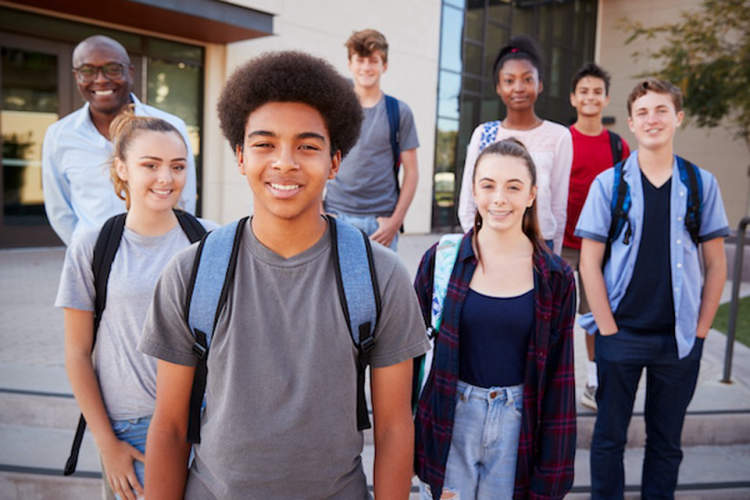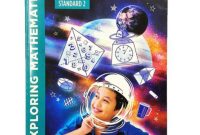The United States of America is renowned for its diversity. From different states of cultures, religions, customs and more, it is truly unique and extremely appealing. This diversity is mirrored in the US student population. Not only is there a range of nationalities, ethnicities and backgrounds, but also a mix of genders, cultural practices, lifestyles, and socio-economic situations. In this article, we explore US student identity and diversity from around the country to gain a better understanding of how it shapes the nation.
To uncover the reality of US student diversity, we take a look at demographics, schools, lifestyles, and experiences. We also delve into the issues that students are pursuing and how their individual identity is being expressed in their environment. Ultimately, our aim is to create an in-depth portrayal of US student identity and uncover the unique attributes that make each student’s experience their own.
Overview of US Student Identity and Diversity
The United States is a melting pot of cultures, with students representing a wide range of diversity in just about every area, including race, gender, age, ethnicity, religion, socio-economic status, abilities, and country of origin. This diversity lends to a unique classroom experience, as these individuals all bring different perspectives to the discussion. In addition, the US school system is filled with both public and private schools, which bring about different educational opportunities in various locations.
As such, it is important to recognize and respect the identities of students in order to create equitable and inclusive learning environments. This means seeking to understand how identities, such as gender, race, ethnicity, and religion, shape an individual’s lived experiences, and how these elements contribute to the overall diversity of the school community. Thus, US student identity and diversity should not be viewed as isolated topics, but rather as dynamic parts of the same whole.
Exploring US students’ identity and diversity means examining the various ways they contribute to the educational experience. Below are some of the key areas that should be considered:
- Racial/ethnic identity and cultural background.
- Gender identity and expression.
- Religious and spiritual identities.
- Generational dynamics and intergenerational communication.
- Divisions of class and attention to economic disparities.
- Access to and experience with higher education.
- Different levels of interest in and engagement with learning.
- Access to and experience with technology.
- Disabilities and accessibility of learning environments.
- Linguistic and language proficiency.
Ultimately, US student identity and diversity are inseparable, and understanding the different ways they intersect can be critical to ensuring an equitable, inclusive and respectful learning environment.
Economic Challenges of US Student Diversity

As the American population diversifies, so will the students of US higher education institutions. Despite the vast potential these students can bring to academic institutions, there remain economic challenges that these students face due to their diverse backgrounds. In the article entitled, “Exploring US Student Identity and Diversity”, we will discuss these economic challenges and the ways in which they can be overcome.
First, many students belonging to diverse backgrounds may face economic disadvantages due to their family backgrounds. In this case, students may not have the resources or financial stability to meet the standards of academics or even support their daily living expenses. As a result, many students may end up dropping out of college due to the lack of funds.
Second, many students from low-income backgrounds may experience difficulty affording the cost of tuition, housing and other expenses that come with attending college. This can create a roadblock for students who wish to pursue a higher education, as well as discourage them from doing so. Moreover, financial aid and scholarships may not provide the necessary funds for students to support their studies.
In spite of these economic challenges, there are ways to address the situation. First, colleges and universities can provide financial aid and scholarships for students belonging to diverse backgrounds. Schools can also offer work-study programs to help students finance their college studies. Furthermore, institutions can also provide mentoring programs to help students adjust to their new environments and to access the resources they need for academic success.
In conclusion, US student diversity brings both opportunities and economic challenges to the higher education system. Institutions must take steps to ensure that these students are given the resources and support needed for academic success.
Cultural Implications of US Student Diversity
The US college student population is comprised of individuals from various backgrounds, each with their own unique identities. In recent years, the student body in college and universities has become even more diverse as foreign students from various cultures and backgrounds come to the US to pursue higher education. This diversity presents both opportunities and challenges to educators who must navigate these cultural complexities as well as strive to create an environment of inclusion for each student.
To better understand the cultural implications of US student diversity, we must look at its effects on the overall academic experience. Firstly, students from different cultures bring unique perspectives and experiences to the classroom. This can create an environment of powerful learning that nurtures mutual understanding and respect between students and professors. Therefore, course content and instruction should be designed to accommodate the varied backgrounds, perspectives and cultural competencies of each student in the classroom.
Secondly, student diversity also affects the social environment of college and university. This is especially true in places where a variety of nationalities, languages and backgrounds are represented in the student population. Such diversity can create a sense of community and belonging as well as reduce community isolation. However, it can also create tension and misunderstandings between different cultural groups which must be actively addressed by both students and faculty.
Finally, student diversity also has tangible implications for the academic and professional development of individual students. This is because each student brings a unique set of knowledge, skills and perspectives that contribute to their academic achievement and employability. For example, students from diverse backgrounds may have experience with different industries, languages, cultures or technologies, which can give them greater opportunity to access a wide range of internships and jobs after graduating.
In conclusion, US student diversity can provide the US higher education system with both opportunities and challenges. It is important that educators and administrators at college and university level create an environment of mutual understanding and respect which capitalizes on the advantages of student diversity. Additionally, students should be aware of the implications of student diversity for their academic and professional development.
Conclusion
This article has examined US student identity and diversity through a variety of disciplines and perspectives. It has demonstrated that US students represent a wide range of cultures, backgrounds, and identities, and that the cultural environment of the US creates unique challenges and opportunities. Ultimately, it is clear that US student diversity is a source of strength and should be celebrated and respected.
Given the complexity of this issue, further research is needed to explore new models for fostering inclusivity and understanding. For example, creating intercultural dialogue spaces and finding innovative ways to cultivate appreciation and respect across differences are just two ways to cultivate an environment of inclusion for all US students.




